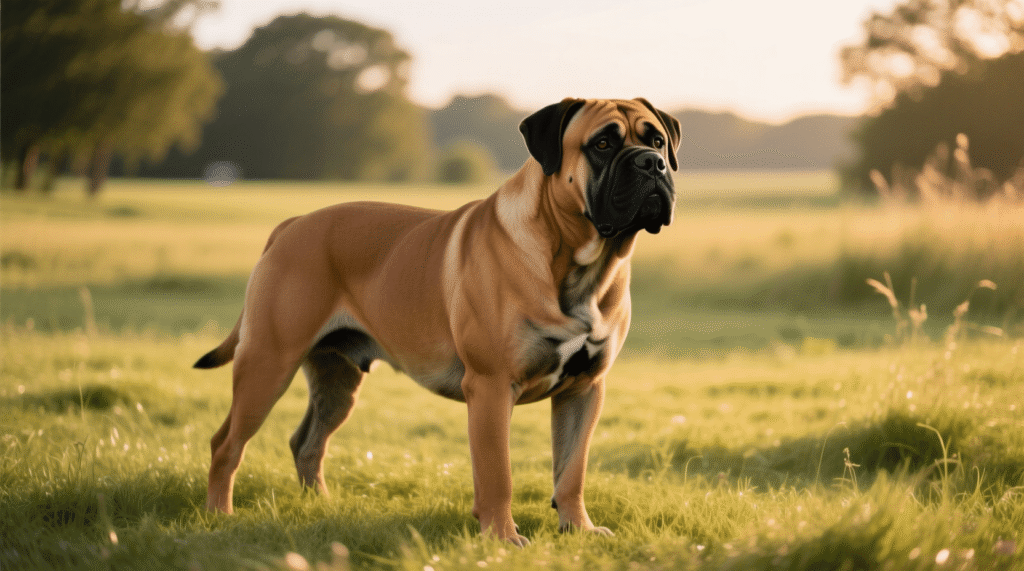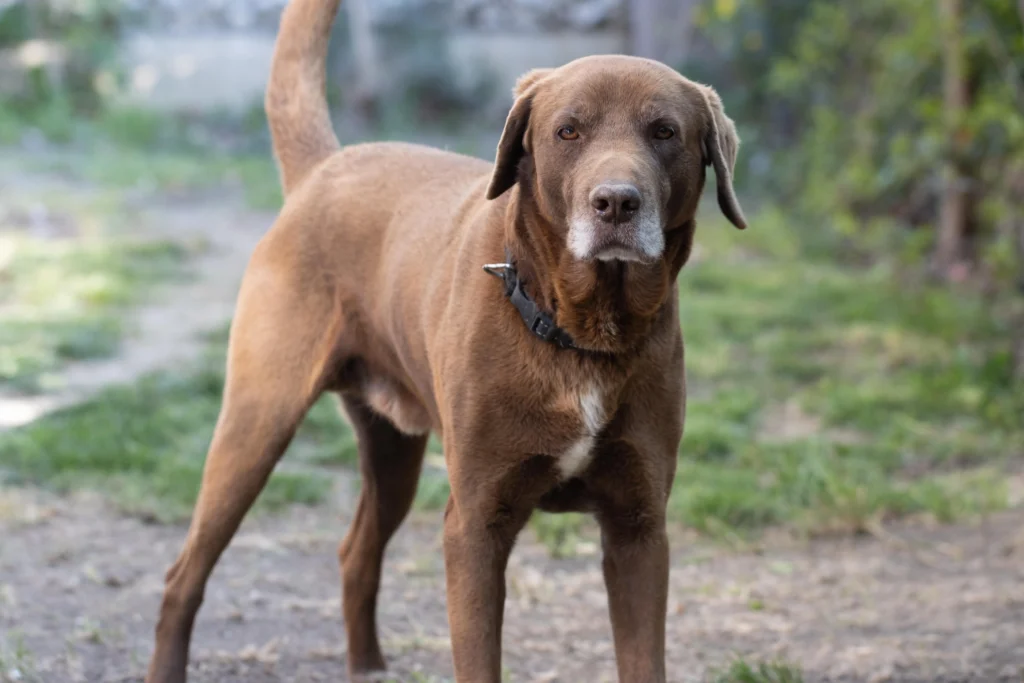The Boxer is one of the world’s most recognizable dogs—muscular, expressive, energetic, deeply loyal, and famously clownish. For more than a century, Boxers have been valued as family companions, working dogs, service dogs, and even athletes in competitive canine sports. Today, the breed continues to rank among the most popular medium–large dogs worldwide because of its combination of strength, intelligence, and heart.
This guide brings together everything you need to know about the Boxer dog breed: its history, appearance, temperament, health risks, training needs, grooming, care, and the most important modern research every prospective or current Boxer owner should understand.
History of the Boxer: Where the Breed Began
The Boxer is a german breed, originated in Germany in the 19th century. It descends from the Bullenbeisser, a now-extinct hunting dog used for bull-baiting, boar hunting, and guarding estates. German breeders refined the breed by crossing it with early English Bulldogs to create a more agile, responsive, and trainable working dog.
By the early 1900s, the Boxer had become a versatile working breed used in police work, military service, and courier tasks during World War I. The American Kennel Club officially recognized the breed in 1904, and today, Boxers are beloved everywhere for their companionship and expressive personalities.
Physical Traits: What a Boxer Looks Like
Boxers are athletic, square-built dogs known for their broad chest, strong muscles, and distinctive facial expressions. The breed standard defines them as:
- Height: 21–25 inches (53–63 cm)
- Weight: Typically 25–32 kg (55–70 pounds), depending on sex
- Coat: Short, smooth, and tight
- Colors: Fawn, brindle, white, or combinations with white markings
- Face: A short muzzle with a trademark wide jaw and strong bite
Their muscular frame and confident posture make them look powerful, but their facial expressions—especially the famous “Boxer wiggle”—show their unmistakably playful nature.

Temperament: Why Boxers Are Great Family Dogs
Boxers are a study in contrasts: they are powerful yet gentle, active yet affectionate, protective yet friendly. Their core temperament traits include:
- Loyal and deeply attached to their family
- Playful and often silly
- Energetic and easily bored without activity
- Good with children when socialized properly
- Alert, making them reliable watchdogs
They are often called “Peter Pan dogs” because they mature slowly and stay puppy-like for several years. Early training and consistent routines help channel their energy in positive ways.
Exercise Needs: Keeping a Boxer Happy
Boxers require at least 60–90 minutes of exercise daily, which can include:
- Walking or running
- Fetch and playtime
- Agility training
- Tracking or obedience activities
Because they are brachycephalic (short-muzzled), Boxers overheat easily. Owners should avoid intense exercise during peak heat and always provide shade and water.
Grooming and Daily Care
Luckily, Boxers are low-maintenance in the grooming department. Their short coat sheds moderately but only requires:
- Weekly brushing
- Regular nail trimming
- Routine dental care
- Ear cleaning
- Occasional baths
What they lack in grooming needs, they make up for in attention needs. Boxers thrive on interaction and do not do well when left alone for long periods.
Common Health Conditions in Boxers
Modern veterinary research highlights several health concerns that Boxer owners should monitor. Responsible breeders typically screen for these conditions:
1. Heart Disease (ARVC – Boxer Cardiomyopathy)
Boxers are genetically predisposed to Arrhythmogenic Right Ventricular Cardiomyopathy. This condition causes irregular heart rhythms and can be identified early through:
- Holter monitoring
- Echocardiograms
- Genetic testing (when available)
2. Cancer (Especially Mast Cell Tumors)
Multiple studies list Boxers among the breeds with higher incidences of certain cancers. Regular skin checks and quick evaluation of lumps are essential.
3. Hip Dysplasia
Although less common than in some large breeds, hip dysplasia can occur. Screening through OFA or similar programs helps reduce risk.
4. Brachycephalic Respiratory Concerns
Boxers are moderately brachycephalic, meaning they can experience breathing challenges, especially in heat or under physical stress.
5. Hypothyroidism & Degenerative Myelopathy
Some lines are more predisposed to endocrine or neurologic disorders, making regular vet checks important.
Nutrition Guidelines for Boxers
A healthy Boxer thrives on a balanced, high-quality diet rich in animal proteins. Key dietary recommendations include:
- Multiple small meals a day instead of one large one
- Controlled calories to prevent obesity
- Supplements (only if recommended by your veterinarian)
- Puppy formulas designed for medium/large-breed growth
Because Boxers are active, they often need more calories than a comparably sized sedentary dog.
Training and Socialization
Boxers are intelligent and eager to please but can be stubborn at times. Training should be:
- Positive
- Reward-based
- Consistent
- Started early
Early exposure to people, other dogs, noises, and new environments helps build confidence and reduces inappropriate guarding or reactivity.
Choosing a Boxer Puppy or Adult Dog
Whether buying from a responsible breeder or adopting from a rescue, always:
- Request health certificates
- Ask for hip scores
- Confirm cardiac screening
- Review family health history
- Ensure puppies are raised in a clean, social environment

If adopting, ask the rescue about temperament evaluations, medical history, and any ongoing care needs.
Is a Boxer Right for You?
A Boxer is ideal if you want:
- A loyal, affectionate companion
- A playful, high-energy dog
- A protective but good-natured family pet
- A dog that thrives in active homes
A Boxer may not be ideal if you prefer a low-energy breed or cannot commit to daily exercise and engagement.
frequently asked questions
Q1. Are Boxers good family dogs?
Yes, Boxers are known for being affectionate, loyal, and excellent with children when properly socialized.
Q2. How long do Boxer dogs live?
Boxers typically live around 10–12 years, depending on genetics and overall health care.
Q3. Do Boxers require a lot of exercise?
Yes, Boxers need 60–90 minutes of daily exercise to stay healthy and well-behaved.
Q4. Are Boxers prone to health problems?
Yes, Boxers are predisposed to heart disease (ARVC), certain cancers, hip dysplasia, and some respiratory issues.
Q5. Are Boxers easy to train?
Boxers are intelligent but can be stubborn. Consistent, positive training works best.
Q6. Do Boxers shed a lot?
Boxers shed moderately year-round but require minimal grooming due to their short coat.
Q7. Can Boxers tolerate heat?
Not very well. Their shortmuzzle makes them prone to overheating, so exercise in hot weather must be limited.
Q8. What should Boxers eat?
Boxers do well on balanced, high-quality diets with appropriate protein, fats, and portion control.
Conclusion
The Boxer remains one of the most loved family dogs in the world—not only for its strength and loyalty, but for its joyful personality, intelligence, and deep bond with its owners. Whether you’re drawn to the breed’s expressive face, playful energy, or natural protective instincts, a Boxer offers companionship that is as affectionate as it is devoted. Like all breeds, Boxers come with unique health considerations and care needs, but with proper exercise, routine veterinary checkups, and early training, they thrive in active homes. Understanding the breed’s history, genetic tendencies, behavior, and daily care requirements helps you become a more informed and confident Boxer owner, ensuring your dog enjoys a long, healthy, and happy life by your side.


